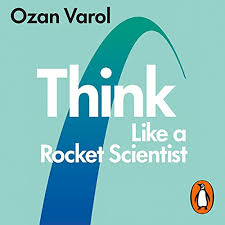Think Like a Rocket Scientist: A Deep Dive into Unconventional Innovation
Introduction
In his seminal work, Think Like a Rocket Scientist, Ozan Varol introduces a revolutionary approach to problem-solving and innovation. By drawing parallels between the unconventional thinking of rocket scientists and the challenges of everyday life, Varol offers a practical framework for achieving extraordinary results. This expanded white paper will delve deeper into the concepts presented in Varol's book, explore related literature, and provide a comprehensive reference list.
Key Principles from Think Like a Rocket Scientist
- Defy Gravity: This principle encourages us to challenge conventional wisdom and seek unconventional solutions. It's about breaking free from the constraints of the status quo and exploring new possibilities.
- Launch Big: Varol emphasizes the importance of setting ambitious goals and dreaming big. By aiming high, we can inspire ourselves and others to achieve extraordinary things.
- Build a Rocket Team: Effective innovation requires a diverse and talented team. By assembling a group of individuals with complementary skills and perspectives, we can create a powerful force for change.
- Ignite Your Engines: This principle is about harnessing passion and motivation to fuel our innovation efforts. When we are truly excited about what we are doing, we are more likely to persevere through challenges and achieve our goals.
- Blast Off: The final principle encourages us to take action and launch our innovative ideas into the world. It's about overcoming fear and seizing opportunities.
Related Literature
Several other books offer valuable insights into innovation and unconventional thinking:
- Mastery by Robert Greene: Greene explores the concept of mastery and the importance of lifelong learning. His book provides a framework for developing the skills and mindset necessary for innovation.
- The Innovator's Dilemma by Clayton M. Christensen: Christensen examines the challenges faced by established companies as they try to adapt to disruptive technologies. His book offers valuable lessons for innovators who want to stay ahead of the curve.
- The Art of Possibility by Rosamund Stone Zander and Ben Zander: This book explores the power of positive thinking and imagination. The Zanders offer practical tools and techniques for cultivating a more creative and optimistic mindset.
- Creativity, Inc. by Ed Catmull: Catmull, the president of Pixar Animation Studios, shares his insights into fostering creativity and innovation in a corporate setting. His book offers valuable lessons for leaders and entrepreneurs.
Reference List
- Varol, O. (2017). Think Like a Rocket Scientist: The Life-Changing Approach to Problem-Solving. HarperOne.
- Greene, R. (2012). Mastery. Viking.
- Christensen, C. M. (1997). The Innovator's Dilemma: When New Technologies Cause Great Firms to Fail. Harvard Business School Press.
- Zander, R. S., & Zander, B. (2000). The Art of Possibility: Transforming Your Life by Imagining a New Reality. Penguin.
- Catmull, E. (2014). Creativity, Inc.: Overcoming the Unseen Forces That Stand in the Way of True Innovation. Random House.
By exploring the concepts presented in Think Like a Rocket Scientist and related literature, we can gain a deeper understanding of the principles that drive innovation and develop the skills necessary to achieve extraordinary results. Contact ias-research.com for details. Contact ias-research.com for details.



